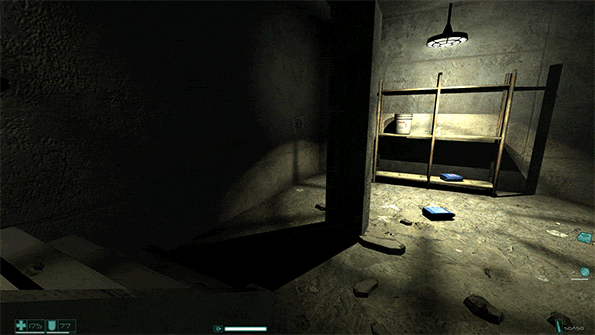F.E.A.R. is a Chaotic Genre-Bending Horror Experience
A horror classic that is well worth your time this Halloween

Most horror games rely on making the player feel small and powerless in order to make them feel scared. There are titles such as Outlast or Amnesia that strip everything away from the player to force them into running and hiding from the monstrous things that are hunting them. Then you have titles such as Resident Evil or Silent Hill, giving players a chance to fight back but with limited supplies such as ammo and health, making the player feel as if they’re barely scraping by to survive. Then you have F.E.A.R.
With Halloween just a few weeks away, it’s a perfect time to talk about this massively underrated title.

F.E.A.R., developed by Monolith Productions and released in 2005, occupies its own unique space within the horror genre and it’s a shame to see the lack of influence that it’s had on the industry.
The premise is short and sweet. A Special Forces unit known as F.E.A.R. (First Encounter Assault Recon) is sent to hunt down a man named Fettel, one of the game’s main cannibalistic antagonists. It isn’t long however before everything goes wrong and the player is pushed into a paranormal world of telepathically controlled supersoldiers, invisible teleporting ninjas, and extremely bloody hallways. It’s all just a little strange, isn’t it?

F.E.A.R. has some terrifyingly realistic lighting for a game released in 2005 and the game uses it to its full potential. Instead of just throwing scary images and sounds at the player, Monolith uses the environment to dynamically freak the player out in some extremely effective ways. Whether it’s a light suddenly being blocked out by an invisible enemy or a shadow of a figure suddenly appearing on the wall in front of you, it’s wonderful to see a horror game that breaks the scripted feel that most horror titles suffer from even if it is just an illusion.
There’s nothing more chilling than a room suddenly being filled with darkness, deliberately breaking the player’s flashlight and forcing them to turn around to expose whatever horror is waiting to reveal itself.

F.E.A.R. also has an incredibly advanced and intelligent AI system that makes every playthrough different. Instead of just being used as obstacles for the player to shoot at, the enemies in F.E.A.R. feel like actual combatants who tactically work together to create a dynamic I’ve rarely seen in a game. They’ll communicate with each other, working together to flank or lure out the player using grenades or taunts. If they lose sight of you, they’ll split up to try and seek you out and if they feel outgunned, they’ll retreat to a safer place. Think of hide and seek, but the end result is someone blowing up into bloody chunks.
This is where F.E.A.R.’s combat shines. F.E.A.R. feels at times as if John Woo was handed a horror film with an unlimited budget. It’s fast and unforgiving and it doesn’t hold your hand. As mentioned previously, the AI is extremely advanced and creates a dynamic that changes every time you play. F.E.A.R. drops you into an area, fills it with enemies, and leaves it to you to decide how you want to handle each encounter.

Thankfully the character we play as, known as Point Man, has the paranormal ability to slow down time for a brief period. The slow-motion doesn’t just help the player to get an advantage in combat but also to flex just how fantastic some of its graphical effects still hold up today. Seeing a shockwave from an explosion shatter glass and kick up dust in slow-mo never ceases to amaze me and it sometimes feels as if Monolith only put slow motion in the game to show off its graphical prowess at the time it was released. It’s weird to think that a horror game in 2005 has action that puts even the most recently released games to shame.
When the action settles, the horror starts to kick in. F.E.A.R. creates a spectacular balance of action and horror, constantly making the player feel like a complete gung-ho badass one second to a scared wimp the next. It may sound repetitive to have a game constantly shift between an action set piece to horror, but F.E.A.R. has enough tricks up its sleeve to continuously surprise the player throughout its twisted campaign.

Unlike its dynamic action, F.E.A.R.’s horror feels a lot more linear. Thankfully F.E.A.R. manages to create an uncomfortable and creepy atmosphere throughout its entire runtime. Although you’ll expect the same scares on a second playthrough, it won’t feel any less unsettling and this is mainly due to the soundtrack. When the horror starts, the soundtrack creates an extremely eery and uncomfortable atmosphere that is unexplainably freaky. I don’t know how Monolith created some of those sounds, but it’s an extremely unappreciated score that really gives F.E.A.R. that final push into pure horror territory.
From creepy ghost girls that crawl through vents to paranormally advanced invisible ninjas (yes, you read that correctly) that can teleport and creep behind you, F.E.A.R. never lets you off of the hook when it comes to making you feel uncomfortable. It feels as if it’s action set pieces are a way for the player to let off some steam and tension before moving onto the next big scare.

It’s a shame to think where the series ended up, with F.E.A.R. 3 being the last and most disappointing entry released in 2011. It feels eerily similar to how other horror franchises such as Silent Hill or Dead Space lost their way, with the developers either changing completely to a brand new team unfamiliar with how the franchise works or a focus on the wrong aspects of what made them so effective in the first place.
F.E.A.R. is a fantastic mix of intense action and horror, blending the two genres seamlessly together to create an extremely fun, dynamic, and terrifying experience that has sadly been lost to time. It never relied on cheap jump-scares or loud noises and instead focused on slowly easing the player into a horrific world full of paranormal and supernatural entities that never gave the player a single second to feel safe or relaxed.
F.E.A.R. is a perfect example of how to blend two opposite genres together to create a unique experience that feels as if it hasn’t aged a single day since it was first released. Since Halloween is fast approaching, there’s no better time to jump in and rediscover a true horror classic.
